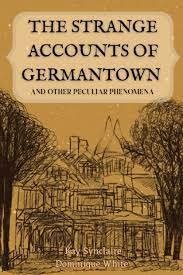David R. Contosta & Carol Franklin, Metropolitan Paradise: The Struggle for Nature in the City; - Philadelphia's Wissahickon Valley, 1620-2020
David R. Contosta & Carol Franklin, Metropolitan Paradise: The Struggle for Nature in the City; - Philadelphia's Wissahickon Valley, 1620-2020
Price includes state and local tax. Purchase through this screen for store pickup.
To have this book shipped, please use our partner Bookshop.org
Four paperback volumes packed into a beautiful hardcover case, Metropolitan Paradise is the definitive book on the relationship between natural and urban environments.
Sacred to the Lenni Lenape and to many early Europeans who settled in the area, the Wissahickon Valley has all the elements of "paradise" recognized in many cultures - the dramatic gorge with high cliffs, twisted rocks, dark hemlocks, sparkling water and the bountiful rolling terrain directly to the north beyond the city boundaries. Ironically, this paradise is part of a large, old North American urban region, suffering from all the troubles of the modern metropolis.
The Wissahickon Valley is a microcosm of changes in the American landscape over the past 400 years. The lessons of its history, present treatment and future possibilities, are both universal and unique. The book is both a local journey and, by extension, an exploration of how to resolve the crises of a collapsing natural world.
Today cities are exploding into complex, densely packed, multi-dimensional organisms. With six billion people on the planet and a projected nine billion within 50 years, almost everyone will be living in a megalopolis. This book is the story of a struggle to establish and maintain connected natural systems in one metropolitan area. The preservation and restoration of this valley is offered as a possible model for the world's cities.
Sustaining natural lands within the matrix of an increasingly pervasive urban landscape is crucial. These places are our "canary in the mine." If they cannot succeed, all wildness is imperiled, impoverishing all life and ultimately threatening human survival. This book is the authors' contribution to a remarkable and widespread effort to restore the Wissahickon Valley and to envision a bold and imaginative future.







